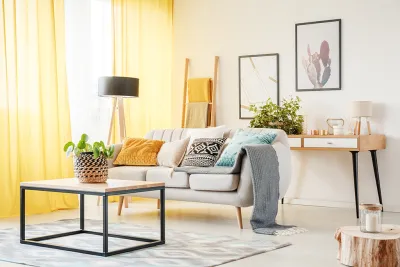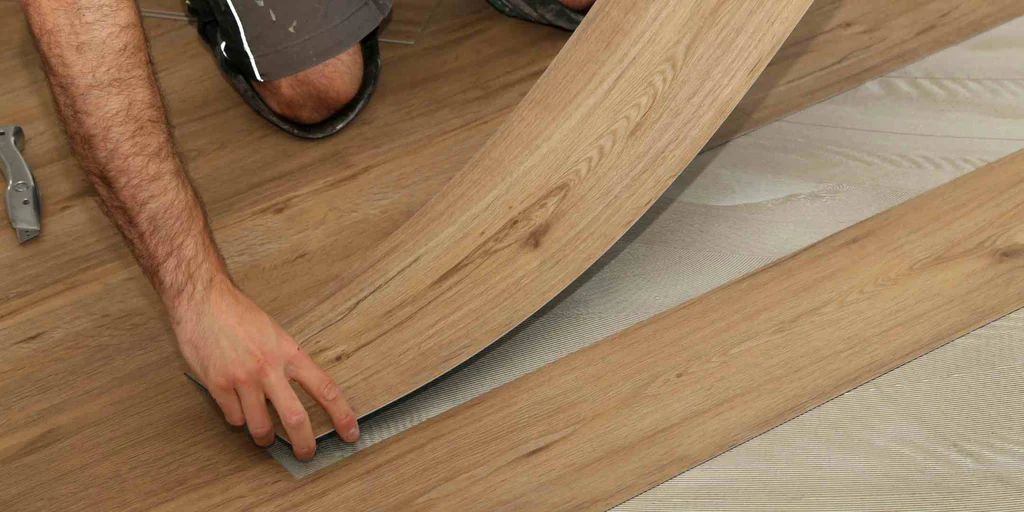Every inch counts when working with limited square footage, but with some clever design tricks and space-saving solutions you can transform any small room into your dream home.
Mirrors can make any room appear larger visually and furniture with exposed legs can help tight spaces feel more expansive. A consistent color palette or material story can also help a small home feel cohesive and cohesive.
1. Keep It Simple
One of the key tips for designing a small space is keeping things as uncomplicated as possible. Too many decorations can quickly make an already tight room feel cramped.
Adherence to a consistent color palette is another simple way to bring visual cohesion in smaller spaces. Neutral hues and pastel tones reflect natural light, creating an airy ambiance in any space.
When space is at a premium, furniture with narrow legs or condo-sized sectionals that occupy less floor area should be considered. When selecting lighting solutions that don’t take up floor space such as wall sconces or floating shelves – also try sheer curtains or rice paper room dividers which allow light to flow between both spaces without blocking out natural sunlight.
2. Go Bold with Color
Decorating a small space requires keeping in mind the importance of thoughtful design and vibrant paint colors in creating an open and airy feeling within your home. Don’t be shy to add pops of bright hues!
White paint can help visually expand a room. However, soft neutrals can achieve this same result when used within an overall tonal scheme.
Monochromatic schemes can be the ideal choice for small rooms, and are easier than you think to implement. Here, a combination of muted sky blue and rusty orange complements a warm wooden floor and simple window treatments beautifully.
3. Make It Work With Symmetry
Symmetry can be found everywhere–human faces, snowflakes and violins–and is an enduring design principle applicable to virtually every style. For homeowners, its application provides an effective means of creating visual harmony in rooms which might otherwise feel disjointed or discordant.
Overdoing it, however, can quickly become tedious and uninspiring. A room filled with identical sofas, bookshelves and art can quickly appear uninspired and lifeless.
To ensure an eye-catching design, focus on finding focal points in each room and building your symmetrical elements around them. Choose furniture pieces that do multiple jobs such as ottomans that double as seating or coffee tables with built-in storage; this way you’ll avoid adding too many matching pieces and keep the design feeling contemporary.
4. Think Outside the Box
Thinking outside the box is one of the most vital skills to master as a designer – whether in a brainstorm meeting or when creating an eye-catching design – because it sets apart good designers from truly legendary ones.
Add storage in unexpected places to prevent your small space from feeling overstuffed and disorganized, such as adding it under your stairs or in otherwise underused corners.
Enhance floor space by selecting furniture with exposed legs rather than solid bases. This enables more of the room to be visible and reduces feelings of enclosure in your room. Also try to avoid larger pieces that occupy floor space by opting for wall-mounted shelves, toilets and cupboards instead – they may make the space feel more open!
5. Think About Lighting
Clutter can quickly take over when there is limited floor space available to you, making minimizing furniture pieces and decorative elements in each room essential to keeping everything looking clean and open.
Mounting your television on the wall rather than placing it on a media console or hutch can help free up floor space and make a room seem larger. Another idea would be to transform the refrigerator into an eye-catching work of art, like Anthony Dunning has done here.
Exposed-leg furniture helps a room appear larger, whether it’s sofas and coffee tables or dressers and beds. Opting for lighter neutral paint colors as well as lighter neutral furniture pieces will further increase feelings of openness in any given space. Lighting should also be kept in mind when designing small spaces as this affects how furniture or decorative elements are perceived and experienced by their inhabitants.





